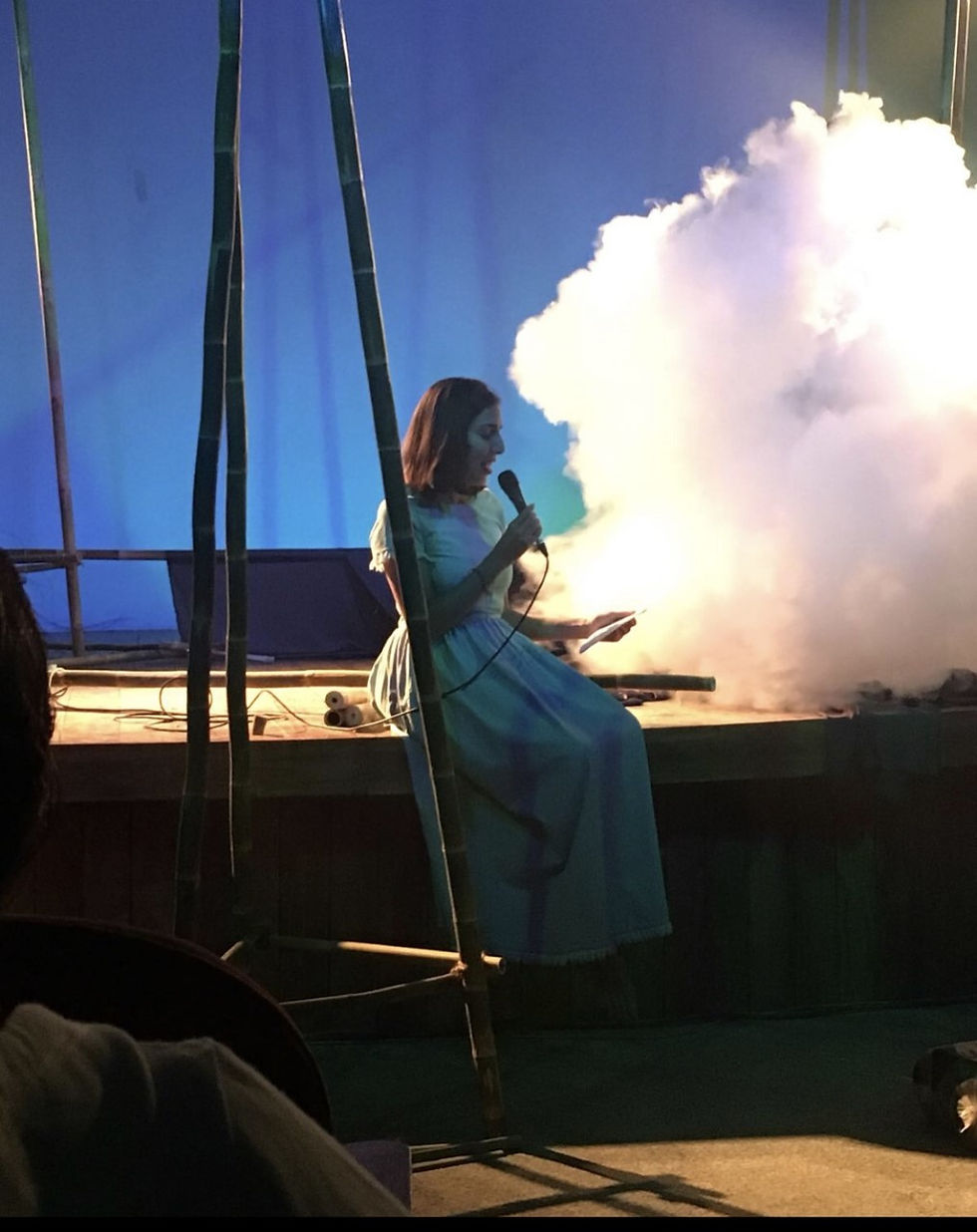Liquidity and Flux: Cecilia Bengolea
- C-print

- Dec 4, 2020
- 4 min read
"I see dance as an animated sculpture that allows me to be both the subject and object, simultaneously. I think of sculpture as the freezing of movement", says Cecilia Bengolea who is currently presenting her first solo exhibition in Scandinavia with Andréhn-Schiptjenko in Stockholm.

Performance, Cecilia Bengolea
C-P: You’ve previously brought your choreographic work to Stockholm for the stage, at MDT, but your exhibition at Andréhn-Schiptjenko marks your first solo exhibition in Scandinavia as a visual artist and sculptor. How did this collaboration with the gallery come about?
C.B: Ciléne visited my exhibition in Sfer Ik in Tulum, Mexico. I showed a series of oversized algae ceramics. Representing the red tide, which is a threat in the Caribbean caused by Amazonian artificial fertilizers reaching the sea, the algae reproduces excessively leading to a disequilibrium in the ecosystem. I also last year in a show with Chus Martinez produced a series of clay creatures, but this time relating to the bottom of the sea, that we decided to show at the gallery in Stockholm.

Cecilia Bengolea, Danse au fond de la mer, 2019, video, 12:52 minutes

Cecilia Bengolea
C-P: In terms of form, the exhibition Liquid Guru is very interesting, considering also your lenticular prints which offer the sort of hybrid-display between 2D and 3D that people might remember from fanciful rulers and postcards from when they were younger. What is the narrational point of departure behind your works on view?
C.B: My work contemplates liquidity as a form of constant evolution and transformation. Liquidity of the body, which through sweat allows the body to evaporate and take part in a greater cosmic liquidity. Water also conducts electricity and neuronal connections are electric. This is why I prefer to dance in humid weather; so that the liquidity of the body makes the electrical neuronal connections faster and inhabits the whole body like an octopus, with a descentralized neuronal system. I like to think of my works as alive beings.

Cecilia Bengolea, Salton Friends, 2020, lenticular print
I have a hard time to consider a work finished. The lenticular techinique allows me to let the image transform when the viewer changes their position. There is an incentive with the viewer to move in order to see the print unveil another image. In March 2020, I was supposed to go back to Jamaica to film and perform, but I went back to La Pampa in Argentina to stay with my family during the confinement. For each of the prints Pampa-Kingston Sunset and Pampa-Kingston Sunset I worked around two spaces and moments in time that I wished to see happen at the same time. So, I made these spaces meet in these prints. The changes in the light during sunset and sunrise, especially in winter, bear some kind of melancholy. It's a show of nature which lasts very briefly. I saw on Instagram, while in confinement, many people posting sunsets and sunrises. The pandemic forced us to look at cycles of nature, as there were no more shows than what nature itself holds.

Installation view, Cecilia Bengolea, Liquid Guru at Andréhn-Schiptjenko, Stockholm; Pampa Kingston Sunset, 2020 & Pampa Kingston Sunrise, 2020, lenticular prints
C-P: What sort of overlap as viewers should we see between your work in dance and choreography and as a visual artist?
C.B: I see dance as an animated sculpture that allows me to be both subject and object, simultaneously. I think of sculpture as the freezing of movement. I wish to transmit more movement with and through clay which is also a organic living material.

Diana Betancourt Campbell at Cecilia Bengolea's participation in the 2018 Dhaka Art Summit, Bangladesh
C-P: I ask from self-interest here. Being very interested in the Dhaka Art Summit in which you participated in the 2018 edition; What was your experience like? I gather you have an ongoing dialogue currently as well with the artistic director of the biennial, Diana Betancourt Campbell?
C.B: I had the chance to visit Bangladesh to show my work at the Dhaka Art Summit with Fiorucci Arts and Trusts, curated by Milovan Farronato, Volcano Extravaganza and Diana Campbell Betancourt. It was my first collaboration with Diana who I met again in Stromboli relating to a Fiorucci program and since then we worked at Frieze Live 2020 in London and now she is also writing for my book. I find it fascinating how Diana makes Western and Oriental cultures meet. I met many interesting artists from Bangladesh, India and the Philippines.

Installation view, Cecilia Bengolea, Liquid Guru at Andréhn-Schiptjenko, Stockholm
C-P: In light of covid-19, what sort of impact has the pandemic had on your practice and what’s next for you in 2021?
C.B: I'm glad to have stayed long time in each place I've been. The past years have been quite challenging to travel very much. In 2020 I stayed in residecency at the Luma Fondation for four months. I stayed in Argentina, Portugal and France for long and managed to show my video works and installations without travelling. That was very positive for me. In 2021 I will work on a new commission for the Mistake Room in LA in collaboration with Ceramicas Suro in Guadalajara and at the same time also work with the Ecco Museum in Mexico City. There are as well two performance commissions; one is a musical comedy with five young French rappers for la Bourse de Commerce in Paris (Collection Pinault), and the other is for the
V-A-C Foundation in Moscow.

Performance, Cecilia Bengolea
Images courtesy the artist and Andréhn-Schiptjenko, Stockholm, Paris.
Liquid Guru
Cecilia Bengolea at Andréhn-Schiptjenko, Stockholm
November 12 – December 19, 2020
www.andrehn-schiptjenko.com


